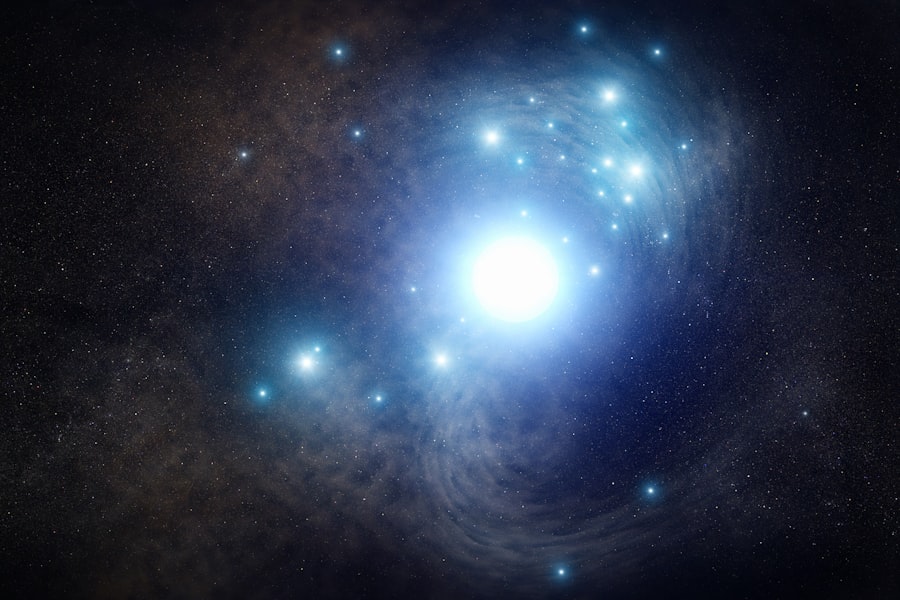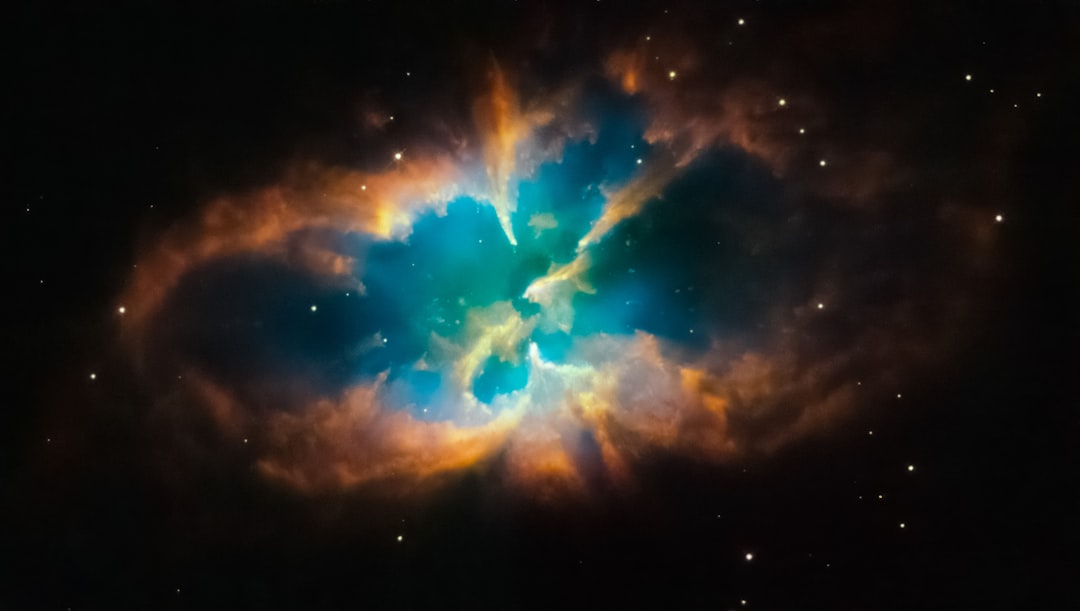A supernova is one of the most spectacular and energetic events in the universe, marking the explosive death of a star. This phenomenon can outshine entire galaxies for a brief period, releasing an immense amount of energy and ejecting stellar material into space at incredible velocities. Supernovae are classified into two primary types: Type I and Type
The brightness of a supernova can be so intense that it can be observed across vast cosmic distances, providing astronomers with valuable data about the universe’s structure and evolution. The light emitted during a supernova can last for weeks or even months, gradually fading as the energy dissipates. These events are not only visually stunning but also play a crucial role in the cosmic ecosystem, contributing to the formation of new stars and planets by dispersing heavy elements throughout the interstellar medium.
Key Takeaways
- A supernova is a powerful and explosive event that occurs at the end of a star’s life cycle, resulting in the release of a tremendous amount of energy and the formation of new elements.
- The life cycle of a star leading to a supernova involves the fusion of elements in the star’s core, eventually leading to the collapse and explosion of the star.
- The explosive power of a supernova is driven by the rapid release of energy during the collapse and subsequent rebound of the star’s core.
- A supernova has a significant impact on the surrounding space, including the dispersal of newly formed elements and the potential to trigger the formation of new stars and planetary systems.
- The formation of new elements in a supernova occurs through the process of nucleosynthesis, where heavier elements are created from the fusion of lighter elements during the explosive event.
The Life Cycle of a Star Leading to a Supernova
The life cycle of a star is a complex journey that begins with the gravitational collapse of a gas cloud, primarily composed of hydrogen and helium. As this cloud contracts, it heats up and eventually ignites nuclear fusion in its core, marking the birth of a star. For massive stars, this process leads to a series of nuclear fusion reactions that create heavier elements over millions of years.
These stars spend the majority of their lives in a stable state known as the main sequence, where they fuse hydrogen into helium. As these massive stars evolve, they exhaust their hydrogen fuel and begin fusing helium into heavier elements like carbon and oxygen. This process continues until iron is produced in the core.
Unlike lighter elements, iron fusion does not release energy; instead, it consumes energy, leading to an imbalance in the star’s internal pressure. Once the core becomes predominantly iron, it can no longer support the weight of the outer layers, resulting in a catastrophic collapse. This collapse triggers a rebound effect that leads to the explosive ejection of the star’s outer layers, culminating in a supernova.
The Physics Behind the Explosive Power

The physics governing supernovae is rooted in the principles of nuclear fusion and gravitational collapse. In massive stars, the core’s temperature and pressure increase as fusion progresses, allowing for the synthesis of heavier elements. However, when iron accumulates in the core, it marks a critical turning point. The inability to generate energy through fusion leads to gravitational instability. The core collapses under its own weight, compressing to extremely high densities and temperatures.
During this collapse, protons and electrons combine to form neutrons, resulting in a neutron star or even a black hole if the mass is sufficient. The outer layers of the star are then expelled at velocities exceeding 10,000 kilometers per second due to the sudden release of gravitational energy. This explosive force is further amplified by shock waves generated during the collapse, which propagate outward and drive the ejection of material into space.
The energy released during this process can be equivalent to that produced by the Sun over its entire lifetime.
The Impact of a Supernova on Surrounding Space
| Impact of a Supernova on Surrounding Space |
|---|
| Release of energy and radiation |
| Formation of new elements |
| Shockwave propagation |
| Creation of nebulae |
| Disruption of nearby celestial bodies |
The impact of a supernova extends far beyond its immediate vicinity; it significantly alters the surrounding interstellar medium. When a supernova occurs, it releases an enormous amount of energy and material into space, creating shock waves that can trigger the formation of new stars in nearby gas clouds. These shock waves compress surrounding gas and dust, leading to regions of increased density where new stars may form.
Moreover, supernovae enrich the interstellar medium with heavy elements synthesized during the star’s life cycle and during the explosion itself. Elements such as carbon, oxygen, nitrogen, and iron are dispersed into space, contributing to the chemical diversity necessary for planet formation and life as we know it. This process is essential for galactic evolution, as it facilitates the recycling of materials within galaxies and influences subsequent generations of stars.
The Formation of New Elements in a Supernova
The Furnace of Element Creation
During a supernova explosion, temperatures reach billions of degrees Celsius, creating an environment that fosters nuclear reactions. These reactions forge heavy elements from lighter ones through rapid neutron capture, a process where atomic nuclei capture neutrons at an extraordinary rate before they can decay.
The Origin of Heavy Elements
Elements like gold, platinum, and uranium are formed under these extreme conditions. The abundance of these heavy elements in our universe can be traced back to supernova explosions that occurred billions of years ago. When these newly formed elements are expelled into space, they become part of the interstellar medium.
Enriching the Universe with Building Blocks for Life
Eventually, these elements contribute to the formation of new stars and planetary systems. Thus, supernovae play an integral role in enriching the universe with essential building blocks for life.
The Role of Supernovae in the Universe

Supernovae serve as critical agents of change within galaxies and across cosmic scales. Their explosive nature not only contributes to stellar evolution but also influences galactic dynamics and structure. The energy released during a supernova can drive galactic winds that expel gas from galaxies or trigger star formation in nearby regions by compressing interstellar gas clouds.
Additionally, supernovae are vital for understanding cosmic distances and the expansion of the universe. Type Ia supernovae have been used as standard candles in cosmology due to their consistent peak brightness. By measuring their luminosity and redshift, astronomers can infer distances to far-off galaxies and gain insights into the rate of cosmic expansion.
This has profound implications for our understanding of dark energy and the ultimate fate of the universe.
Supernovae as Cosmic Cataclysms
The term “cosmic cataclysm” aptly describes supernovae due to their immense scale and destructive power. When a massive star explodes as a supernova, it releases energy equivalent to that produced by billions of suns over their lifetimes within just a few weeks or months. This cataclysmic event can have far-reaching consequences for nearby celestial bodies.
For instance, if a supernova occurs within close proximity to Earth—within about 50 light-years—it could potentially have devastating effects on our planet’s atmosphere and biosphere. The intense radiation emitted during such an event could strip away ozone layers and increase radiation levels on Earth, leading to mass extinctions or significant ecological disruptions. Fortunately, such close encounters are exceedingly rare on cosmic timescales.
Studying Supernovae for Insights into the Universe
The study of supernovae provides astronomers with invaluable insights into various aspects of astrophysics and cosmology. By analyzing light curves—the brightness variations over time—scientists can glean information about the explosion mechanisms and progenitor stars involved in different types of supernovae. Spectroscopy allows researchers to identify chemical compositions and velocities of ejected materials, revealing details about nucleosynthesis processes.
Furthermore, supernovae serve as natural laboratories for testing theories related to fundamental physics under extreme conditions. They challenge our understanding of gravity, nuclear physics, and even quantum mechanics when considering phenomena like neutron stars or black holes formed from these explosions. As technology advances and observational techniques improve—such as through space-based telescopes—our ability to study these cosmic events will continue to deepen our understanding of the universe’s history and evolution.
In summary, supernovae are not merely spectacular celestial events; they are fundamental processes that shape galaxies, enrich interstellar matter with heavy elements, and provide critical insights into cosmic phenomena. Their study continues to illuminate our understanding of stellar life cycles and the broader workings of the universe itself.
Supernova, a powerful astronomical event, is often studied and analyzed by scientists to better understand the universe. In a related article, Algebra, Trigonometry, and Arithmetic in the Renaissance: Analytic Geometry in the Seventeenth Century Descartes Fermat, the historical development of mathematical concepts is explored, showcasing how knowledge and understanding evolve over time. Just as pressure groups address societal issues and inequalities, scientists and mathematicians work to uncover the mysteries of the cosmos through research and analysis.





















+ There are no comments
Add yours